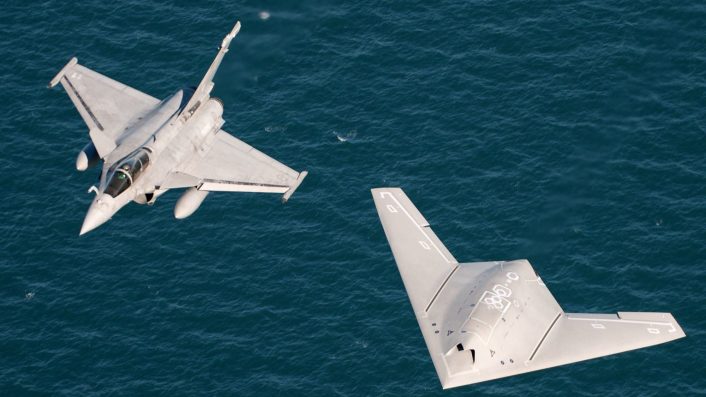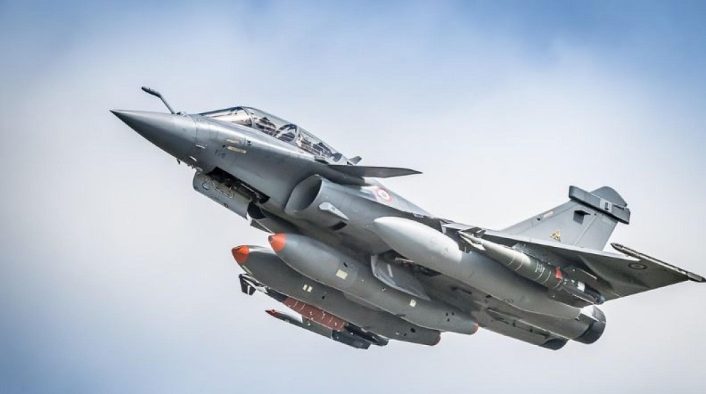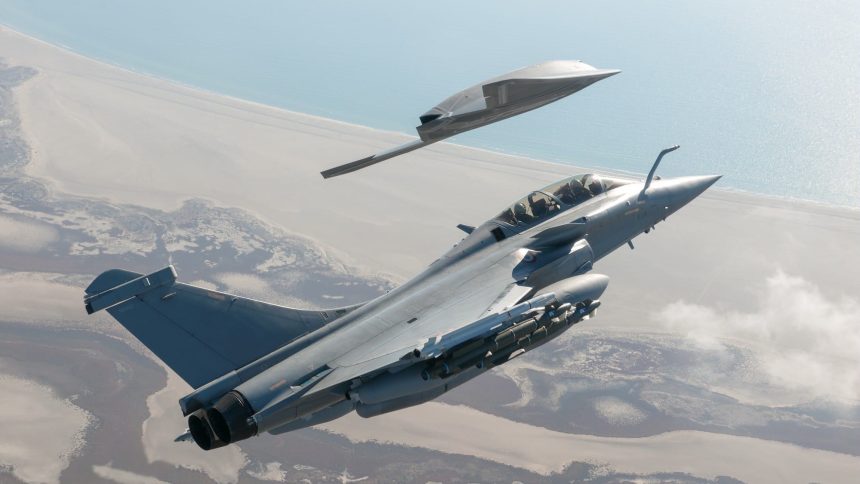The new UCAV that will complement the Rafale F5 will benefit from the achievements of the nEUROn program. The development comes at a time of changes in air warfare and application doctrine in the French Air and Space Force, particularly with regards to SEAD/DEAD missions.
France Minister of the Armed Forces Sébastien Lecornu announced on Oct. 8, 2024, the development of the upcoming Rafale F5 standard, accompanied by a stealth UCAV (Unmanned Combat Aerial Vehicle) and the new ASN4G hypersonic nuclear missile, slated for deployment by the 2030s. The drone would also be largely a derivative of the nEUROn aircraft, which first flew in Dec. 2012 after being initiated in 2003 as Europe’s first UCAV in a collaborative aerospace technological effort between six European countries.
The announcement was made on the occasion of the 60th anniversary of the FAS (Forces Aériennes Stratégiques – Strategic Air Forces) at Saint-Dizier air base. The FAS are a component of the air force in charge of the service’s nuclear attack missions with the Rafale and the ASMP-A supersonic missile.
“This UAV will be complementary to the Rafale and suited to collaborative combat”, said a release from Dassault Aviation. “It will incorporate stealth technologies, autonomous control (with man-in-the-loop), internal payload capacity, and more. It will be highly versatile and designed to evolve in line with future threats.”
Interestingly, the development comes at a time of changes in air warfare and application doctrine in the Armée de l’Air et de l’Espace (AAE), particularly with regards to SEAD/DEAD (Suppression/Destruction of Enemy Air Defense) missions. Discussions in the French parliament from Nov. 2023 reveal that the service envisages future SEAD/DEAD missions to be effectively achieved through joint force missions and not solely through air power. As will be touched upon subsequently, France’s reading of the ongoing war between Russia and Ukraine and the evolution of the electromagnetic spectrum does not necessitate the development of a dedicated electronic warfare version of the Rafale.

Rafale F5 and UCAV
Dassault said that the Rafale F5 “combined with the UCAV and their evolutions, like the Mirage IV in its times, will ensure France’s independence and capability superiority in the coming decades.” Introduced into service in 1964, the Mirage IV was a strategic bomber, and the only European aircraft (at least at the time) that could maintain a speed of Mach 2 for over 30 minutes.
The company then mentioned the nEUROn program, which after “more than 170 test flights to date…lived up to all its promises in terms of performance levels, lead times and budget.” The new UCAV is said to benefit from the achievements of the nEUROn program.
The nEUROn program involved Dassault Aviation as the prime contractor, in collaboration with Airbus Spain (formerly EADS-CASA), Hellenic Aerospace Industries, Italy’s Leonardo (formerly Alenia Aermacchi), Switzerland’s RUAG and Swedish defense major SAAB. The flying wing drone was meant to allow the European industry to develop the required know-how for these systems.
Éric Trappier, Chairman and CEO of Dassault Aviation, said the stealth UCAV “will contribute to the technological and operational superiority of the French Air Force by 2033.” The description calling it capable of evolving “with future threats” suggest an open architecture and modular designed aircraft that can be upgraded with swappable guidance, navigation and sensor suites.
An amendment to the French Military Programming Law specifies the Rafale F5 could include “the development of a drone to support the Rafale, based on the nEUROn UCAV demonstrator.” This drone was described to the Parliament as able to “act discreetly and quickly as an extension of the Rafale F5 (remote sensor and effector) to produce decisive network effects,” becoming a “cornerstone in the treatment of modern medium and long-range anti-aircraft systems.”
Dassault: Unmanned combat aerial vehicle programme kicks off as part of the Rafale F5 standard.
The unmanned combat aerial vehicle (UCAV) will complement the future Rafale F5 standard after 2030.
This UAV will be complementary to the Rafale and suited to collaborative combat.… pic.twitter.com/UmjHEkpH5c
— Vayu Aerospace Review (@ReviewVayu) October 9, 2024
The Rafale F5 upgrade is envisioned to have a higher level of connectivity, data processing and sensor fusion capabilities, similar to the F-35 Lightning II. It is also considered as a transition towards the Next Generation Weapon System within the FCAS (Future Combat Air System). The jet’s primary sensor would be the Thales RBE2 XG radar.
The Rafale F5, as per a report on Opex360, would be a very different aircraft compared to current standard Rafale F3R and F4 variants. Primarily, it would be able to carry the future ASN4G nuclear-capable missile. Another defining feature would be the ability to process “huge volumes of data,” which will require fiber optic cabling that current versions do not support, according to General Stéphane Mille, the AAE’s chief of staff.

France’s thinking in SEAD/DEAD missions
The French defense ministry’s reply to a parliamentarian on Nov. 21, 2023, shows how it believes suppressing enemy air defenses in future warfare would rather be successfully achieved through combined air and ground assets, and not solely air power.
Décryptage. Le Rafale franchit une étape cruciale avec l’arrivée du standard F5.
Ce nouveau modèle sera accompagné d’un drone furtif de combat et sera capable d’emporter le futur missile nucléaire hypersonique, l’ASN4G.
Retour sur cette avancée stratégique pour les forces… pic.twitter.com/SB1HBxdYi5
— Ministère des Armées et des Anciens combattants (@Armees_Gouv) October 9, 2024
“In the context of a high-intensity conflict, even if the air environment will probably remain predominant in the application of these military effects, the suppression of enemy anti-aircraft defenses is considered through a joint and multi-environment approach in order to be able to take advantage of a wide range of complementary capabilities,” the reply said.
This was in response to a question whether the AAE needs to develop an equivalent to the U.S. Navy’s EA-18G Growler, an incredibly powerful and capable aircraft that many analysts say forced even China to develop the J-16D.
The Rafale’s (presumably referring to the F5 standard) payload will also be “modernized munitions capable of destroying both powerful and mobile air defense systems.” The ministry added the future air-to-ground weaponry is designed for the “saturation of the electromagnetic spectrum” to combat A2/AD (Anti-Access/Area Denial) systems.
The transcription noted that enemy defense systems are “increasingly interconnected, fully integrated, redundant and much more robust,” and this must be taken into account. The solution therefore is “to be able to apply diversified and synchronized effects on its various components (command and control centers, means of communication,networks, radars, ground-to-air systems, etc.) to degrade their operation.”









